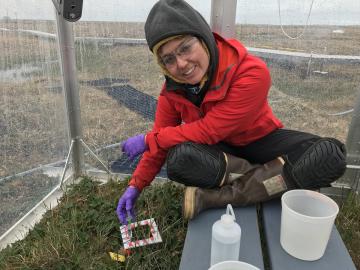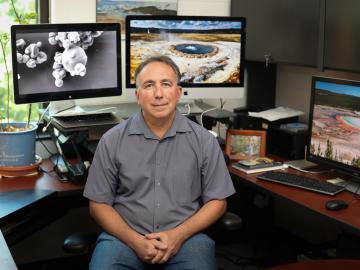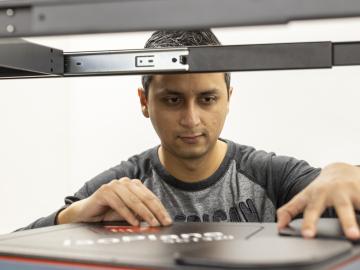
Filter News
Area of Research
- Advanced Manufacturing (3)
- Biology and Environment (110)
- Biology and Soft Matter (1)
- Computational Biology (2)
- Computational Engineering (3)
- Computer Science (10)
- Electricity and Smart Grid (3)
- Energy Science (158)
- Functional Materials for Energy (1)
- Fusion and Fission (31)
- Fusion Energy (17)
- Isotopes (25)
- Materials (62)
- Materials for Computing (7)
- Mathematics (1)
- National Security (39)
- Neutron Science (24)
- Nuclear Science and Technology (24)
- Nuclear Systems Modeling, Simulation and Validation (1)
- Quantum information Science (2)
- Sensors and Controls (1)
- Supercomputing (101)
- Transportation Systems (2)
News Topics
- (-) Advanced Reactors (40)
- (-) Artificial Intelligence (131)
- (-) Cybersecurity (35)
- (-) Environment (218)
- (-) Fusion (67)
- (-) Grid (74)
- (-) Isotopes (62)
- (-) Microelectronics (4)
- (-) Summit (71)
- (-) Transportation (103)
- 3-D Printing/Advanced Manufacturing (147)
- Big Data (79)
- Bioenergy (112)
- Biology (128)
- Biomedical (73)
- Biotechnology (39)
- Buildings (74)
- Chemical Sciences (86)
- Clean Water (33)
- Composites (35)
- Computer Science (226)
- Coronavirus (48)
- Critical Materials (29)
- Education (5)
- Element Discovery (1)
- Emergency (4)
- Energy Storage (114)
- Exascale Computing (67)
- Fossil Energy (8)
- Frontier (64)
- High-Performance Computing (130)
- Hydropower (12)
- Irradiation (3)
- ITER (9)
- Machine Learning (68)
- Materials (157)
- Materials Science (158)
- Mathematics (12)
- Mercury (12)
- Microscopy (56)
- Molten Salt (10)
- Nanotechnology (64)
- National Security (86)
- Neutron Science (171)
- Nuclear Energy (122)
- Partnerships (68)
- Physics (69)
- Polymers (35)
- Quantum Computing (53)
- Quantum Science (93)
- Security (31)
- Simulation (65)
- Software (1)
- Space Exploration (26)
- Statistics (4)
Media Contacts

While some of her earth system modeling colleagues at ORNL face challenges such as processor allocation or debugging code, Verity Salmon prepares for mosquito swarms and the possibility of grizzly bears.

In the early 2000s, high-performance computing experts repurposed GPUs — common video game console components used to speed up image rendering and other time-consuming tasks

Researchers at the Department of Energy’s Oak Ridge National Laboratory (ORNL) in late February demonstrated a 20-kilowatt bi-directional wireless charging system installed on a UPS medium-duty, plug-in hybrid electric delivery truck.

In the race to identify solutions to the COVID-19 pandemic, researchers at the Department of Energy’s Oak Ridge National Laboratory are joining the fight by applying expertise in computational science, advanced manufacturing, data science and neutron science.

Sometimes conducting big science means discovering a species not much larger than a grain of sand.

As a teenager, Kat Royston had a lot of questions. Then an advanced-placement class in physics convinced her all the answers were out there.

Mircea Podar, Distinguished Staff Scientist and Leader of the Systems Genetics Group in the Biosciences Division at Oak Ridge National Laboratory, has been elected fellow of the American Academy of Microbiology.

Jitendra Kumar, a researcher at the Department of Energy’s Oak Ridge National Laboratory, has been elevated to the grade of senior member of the Institute of Electrical and Electronics Engineers (IEEE).

A software package, 10 years in the making, that can predict the behavior of nuclear reactors’ cores with stunning accuracy has been licensed commercially for the first time.

The techniques Theodore Biewer and his colleagues are using to measure whether plasma has the right conditions to create fusion have been around awhile.


